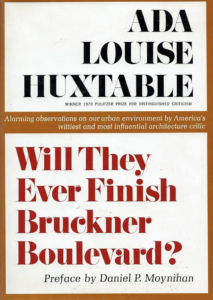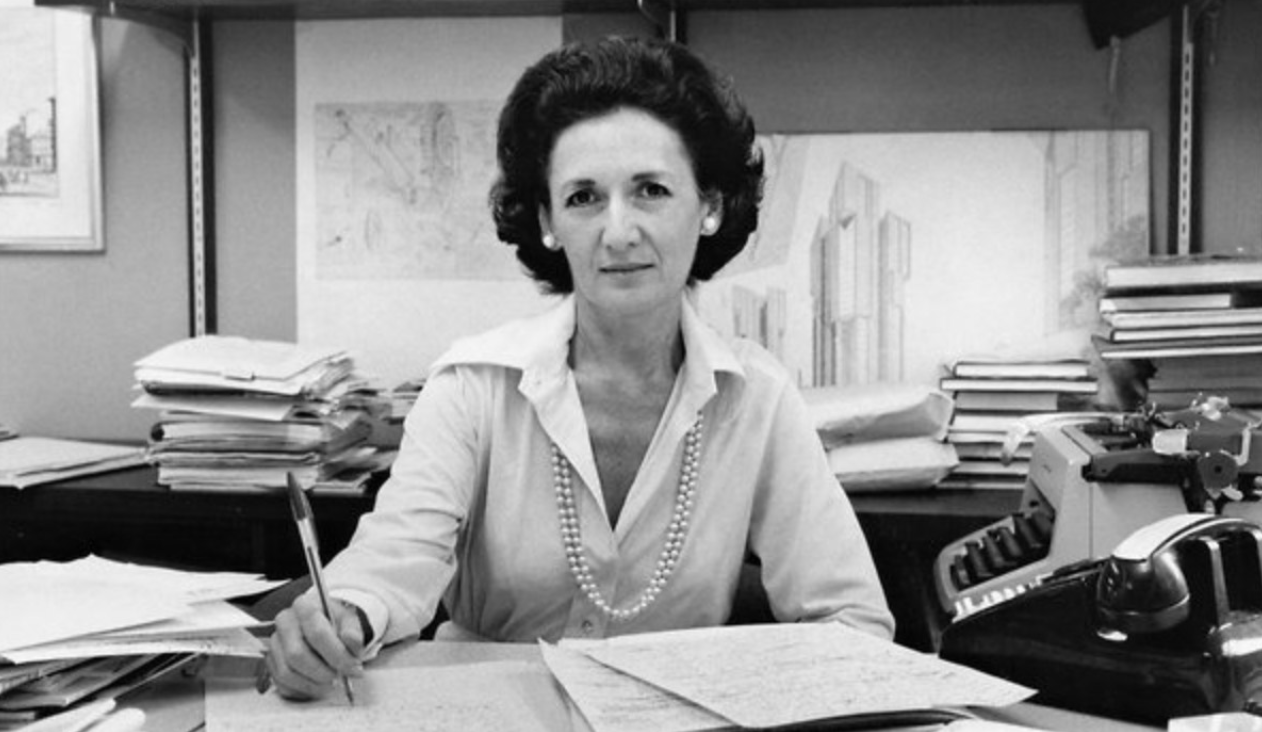As part of our “Women in Architecture” series, we’re examining the life and work of luminary architectural critic, Ada Louise Huxtable, who proved that a pen could be as mighty as any structure.
Born in 1921 in New York City, Ada Louise Huxtable pursued her passion for architectural history, culminating in a master’s degree from New York University’s Institute of Fine Arts. However, her broadest impact came when she broke a glass ceiling as the first full-time architecture critic for The New York Times, in 1963. This was a cultural shift, bringing architectural discourse from the drafting tables to the dining tables of everyday readers.

Amid the changing skyline of New York City, with events like the heart-wrenching demolition of Penn Station and the emergence of modern architectural wonders, Huxtable offered crisp, hard-hitting, pointed, and elegant critiques. She ventured beyond aesthetic judgment, assessing structures for their context, their dialogue with the urban environment, and their societal implications.
One of the hallmarks of Huxtable’s career was her advocacy for architectural preservation. She awakened a sense of loss in the public, making them realize the cultural and architectural wealth embedded in historic structures. But her criticism wasn’t just limited to the annals of the past. Contemporary designs, when lacking in vision or disconnected from their surroundings, didn’t escape her discerning eye.

While her newspaper columns reached a vast audience, Huxtable extended her influence through her books. Over the span of her career she authored several titles, dissecting architectural trends, urban developments, and the intricate relationship between society and design. With books like Will They Ever Finish Bruckner Boulevard? and Frank Lloyd Wright: A Life among others, she penned a total of seven significant works, each contributing to architectural discourse.
Because of the depth and breadth of her contributions, Huxtable earned recognition across numerous fronts. In 1958, she received a Guggenheim Fellowship. In 1970, she became the first recipient of the Pulitzer Prize for Criticism, an accolade that underscored her trailblazing efforts in the field. Alongside this, she secured a MacArthur Fellowship, firmly cementing her position as one of the foremost voices in architectural criticism.

Huxtable continued to spearhead architectural preservation efforts well into her later years. And in spite of passing at the age of 91 in 2013, she serves as a powerful reminder of how a single voice can challenge us to see, think about, and engage with our built environment in deeper and more meaningful ways.

